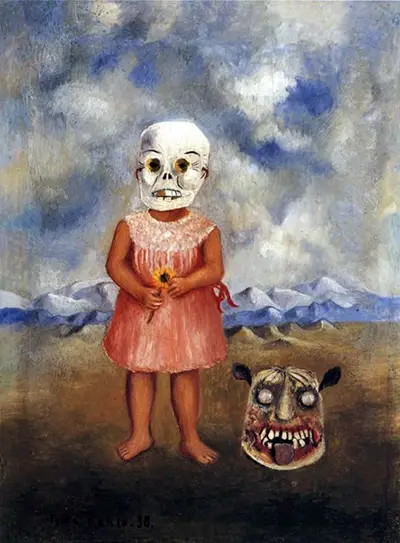It is in part representative of the Mexican festival of the Day of the Dead, or Dia de los Muertos. This festival is held every year to celebrate death rather than to mourn it.
People flood the streets throughout Mexico wearing masks like the one the little girl wears in the painting.
Another symbol of the festival is the yellow flower she is holding, most likely the tagete flower, which is the same one people place on graves to mark this celebration. The mask on the ground is a tiger face, which apparently resembles one Frida had in her house.
The painting is also interpreted as being symbolic of the kind of life Frida lived and her profound feelings.
The painting has a subtitle - She Plays Alone - because Frida often felt very lonely and sorrowful. She had various health problems as a result of an accident when she was a child which caused her to isolate herself. She also had a tumultuous marriage, causing even more emotional suffering.
The isolation of the little girl in the painting is felt through the background and wide open space. The landscape suggests seclusion with its vastness and even the cloudy, brooding sky.
This painting was on display in both Paris and New York over the years since it's creation. It has an interesting history of being passed around to different hands. Originally, Frida gifted the painting to her friend, actress Delores del Rio, also from Mexico.
It then wound up as part of a private collection in Monterey California for some time. Today, it is on display in the Nagoya City Art Museum in Nagoya, Japan. Frida received much recognition for her emotional and symbolic paintings, including Girl with Death Mask, and her influence is still present today.

